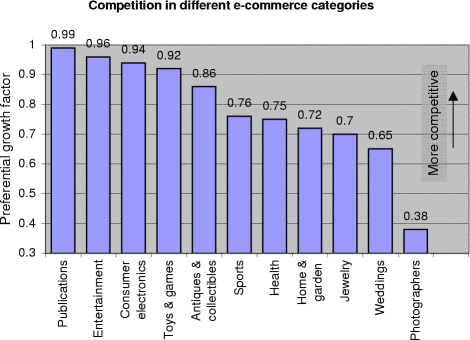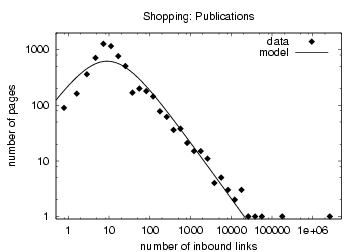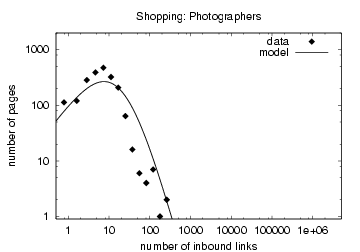|

|
Wednesday, February 05, 2003
|
|
| |
Business Blogging Experiments Weblogs vs. Websites. Erik Heels went live with his Radio-powered site last week. Part of this is an experiment to see whether weblogs deliver greater ROI than a traditional website (his "traditional" site is a database-powered website that is at heels.com). Keep an eye on this. Erik's analysis is always detailed and his conclusions often surprising.[tins ::: Rick Klau's weblog] I have deployed a similar experiment I hope to share as well.
Kathleen Goodwin follows her B-blog article with a roundup of the feedback she recieved. Her take on weblog adaptation for business was more externally facing, a la Gonzo Marketing, than other definitions (klogs). Internal adaptations (such as Rick's k-log pilot) will prove just as powerful or more.
6:09:25 PM 
|
|
Digital insecurity and group-forming. Kellan, Snowdeal, deus_x, and raster write about digital insecurity -- the anxiety you feel about asking a colleague to be your "friend" or "contact" on Ryze and similar systems. The reason is that there is no context for asking. The question doesn't correspond to a social form in real life. [BookBlog]
12:02:17 PM 
|
|
Radio-Groove Interop Exploring Tim Knip's Radio/Groove interop tool. When you install Tim Knip's Groove/Radio interop tool you specify three tools in a shared space. First, a discussion tool whose items are sent to your blog. Second, a files tool whose contents are upstreamed. Third, another discussion tool that collects the RSS items fetched by your news aggregator. ... [Jon's Radio]
I deployed Groove at a small startup that is a consulting client. It decreased reliance on IT support, but is primarily used as a distributed file server. Perhaps this tool will engender collaboration use as blogging is participatory.
8:58:44 AM 
|
|
Modelling the Web 
Just came across an interesting 'Power Law' paper, published by a team at NEC, which offers some thought-provoking data: "NEC researchers discovered that the degree of "rich get richer" or "winners take all" behavior varies in different categories and may be significantly less than previously thought." The key is competitiveness: in very competitive scenarios (NEC looked at ecommerce sites) 'preferential attachment' resulted in distributions that were very close to power law. But, in less competitive environments, the distributions moved steadily away from power law. In fact, deviation from power-law distribution becomes an index for competitiveness. I wonder what the Weblog index looks like? The team also pointed out that 'preferential attachment' did not prevent the rapid rise of a new star (they cite Google)... [Chris Gulker]
|
This paper makes a bold claim: "The model accurately accounts for the true connectivity distributions of category-specific web pages, the web as a whole, and other social networks."
Now its known that link structure drives traffic and traffic in e-commerce drives revenues. The chart to the right (right most point being Amazon) is a clear example of a Power-law in effect. By this example, the business of the net is in the hands of the few.
Aside from a fit and viral node's unlikely emergence, this is the world we live in. Or is it... |
 |
 |
In "less competitive" markets, such as the one to the left for photographers, the distribution is less skewed. NEC Researchers offer geographic concentration as a possible reason for this decentralization.
But I believe the structure of the net is changing because the cost of sustained entry has fallen. Blogging, Web Services and other decentralized models allow new nodes to develop linkages at a lower cost. And these links aren't just driving traffic, they are conversations -- Micro-content forming micro-markets.
As the Net evolves, the definition of a link becomes more refined, the notion of Local blurs and the emergent pattern may trend towards more shared opportunity. |
12:06:57 AM 
|
|
|

|
© Copyright
2003
Ross Mayfield.
Last update:
3/3/2003; 6:22:08 AM.
This theme is based on the SoundWaves
(blue) Manila theme. |
|
|

